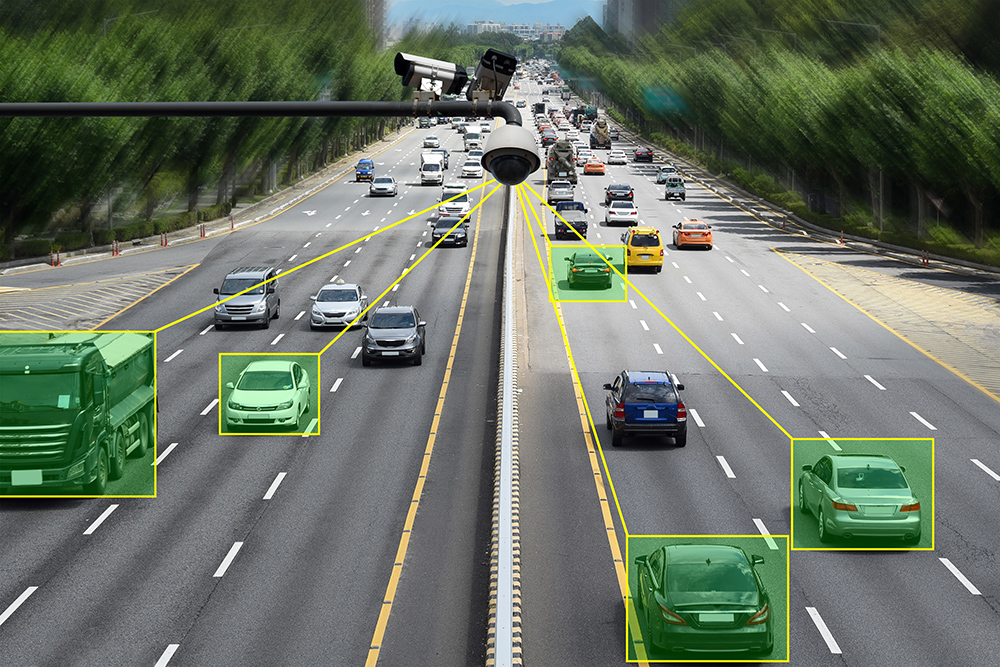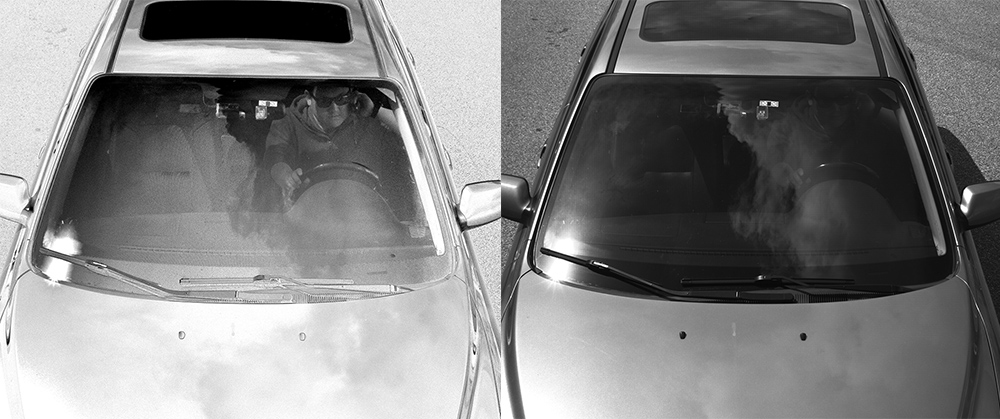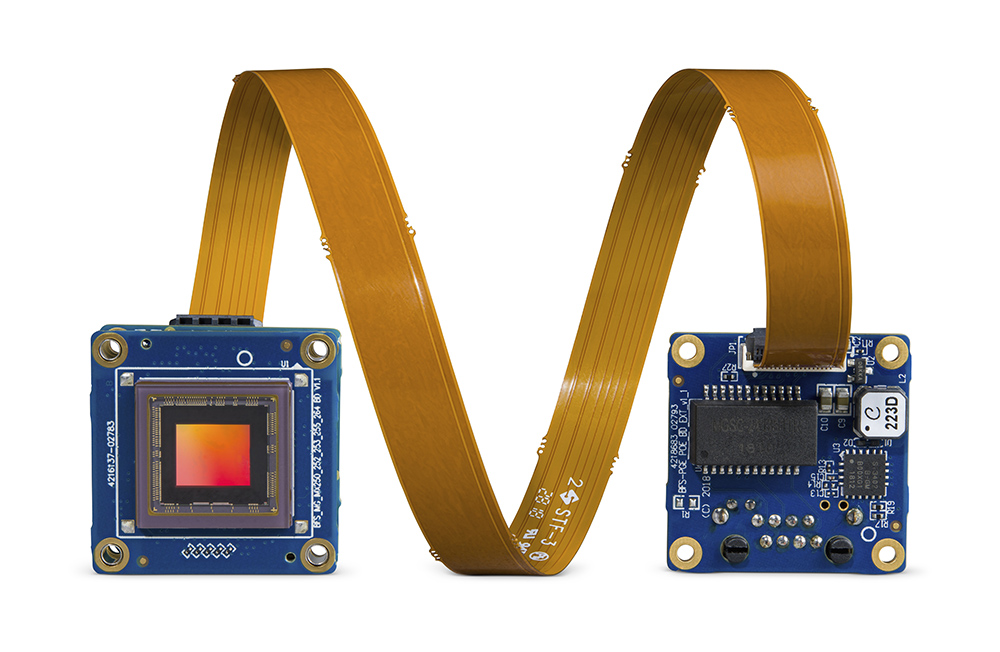
Intelligent transportation systems help improve safety and mobility, enhance productivity and help enforce laws. However, variables such as harsh environments, lighting conditions or specific application requirements impact the decision-making process when it comes to choosing the right cameras for a specific ITS need.
Cameras are used in ITS technology applications such as traffic monitoring, automatic licence plate recognition, high-occupancy vehicle (HOV) lane monitoring, parking enforcement, speed enforcement and asset protection. Depending on the application, different types of cameras and systems may be required. All deployments pose challenges, whether the camera set-ups require long cable runs and the ability to withstand tough environments, or the need requires embedded systems with edge-processing capabilities for quick feedback.
As integrators look at cameras for ITS applications, there are seven key factors to evaluate, including: image quality; the ability to capture colour and cut-through glare; finding the right expert to assist with set-up and support; hardware flexibility; embedded capabilities; physical design and reliability; and the importance of time stamps and GPS data. Careful consideration of these factors can ensure system success, including lowered cost of ownership, future-proofed operations and improved safety for vulnerable road users.

Start with image quality
When it comes to researching cameras for ITS applications, the number one factor is typically image quality. In the case of licence plate recognition applications, the system has two main tasks: recognising that a number/licence plate is in the camera’s field of view and then decoding the plate. Both tasks are subject to error. System designers and integrators rely on these types of powerful cameras to relay valuable information.
ITS scenes may vary greatly in brightness due to changing outdoor lighting caused by weather conditions and time of day, so the camera must be able to capture and provide data and details to the brightest and darkest parts of an image with variations in between. The measurement of a camera’s ability to detect the maximum and minimum light intensities is called “dynamic range,” measured in decibels (dB). In essence, the higher the dB, the better. High quality image sensors offer high dynamic range, making them ideal for a variety of ITS applications and conditions.
While ITS cameras often range from 1.6 megapixels to 26 megapixels, purchasing a high-resolution camera might add unnecessary cost when it is not required for a particular use case. Some integrators may opt to do so to future-proof systems in case of road expansion or other construction projects, thus avoiding having to change out lower-resolution cameras down the road.
Capturing colour, overcoming glare
Deciphering colour is another important task for ITS systems. In Spain, for example, blue lines on the street indicate that a driver must pay for the parking spot, while green lines indicate that the spot is for someone who lives in the neighbourhood. Embedded vision systems can automatically check for infractions but need high quality colour reproduction to do so.
Cameras and vision systems may at times struggle to deal with reflections and glare on reflective surfaces such as glass. For example, if the goal is to look inside a car for HOV lane monitoring, reflections and glare from the sun may prevent the camera from capturing images of the car’s interior - and especially of how many passengers might be in the vehicle, or not.

Cameras using polarisation sensors eliminate glare and enable traffic enforcement systems to see through car windshields for HOV monitoring, seatbelt detection and mobile device violations. Up until recently, most polarised sensor solutions used lighting and filters set for a particular angle of polarised light, making them more suitable for a controlled environment.
Finding a hardware expert
Choosing, testing and optimising hardware present a challenge, but an experienced camera vendor can provide technical consultation on the project and aid with selecting and configuring the cameras. The vendor should also provide referrals to trusted partners when dealing with accessories and services not offered by the company, including lenses, cabling and weatherised housing.
OEMs and integrators may need support through the design and development phase, as well as help with system set-up and software advice. Users should seek out camera manufacturers which provide these services through a combination of system engineers and technical support teams.
Striking a balance
Another consideration when choosing the appropriate product is the SWaP-C (size, weight, power and cost). Applications of all types require devices, systems and programmes with optimal SWaP-C. Board-level, low-cost ITS cameras have grown in popularity in recent years. Cameras coming in smaller packages aren’t enough, however. These cameras must strike a balance between SWaP-C and performance.
For example, consider the case of an expanded highway where a system must be able to see multiple new lanes. Integrators that previously used board-level cameras with low-resolution image sensors may look to upgrade from a 1.3 megapixel camera to either an 8.9 megapixel or 12 megapixel camera with a wider field of view. If the new camera does not have the same form factor as the previous model, however, the integrator will need to redesign and recertify it. Board-level cameras with the same form factor make it easier for integrators to upgrade the respective systems.
The shift towards embedded
ITS has seen a shift toward embedded systems with edge computing capabilities in a low-power, small-form-factor design. The application that may first come to mind when considering embedded systems in ITS is in-vehicle deployment. However, outside of the vehicle, embedded systems can suit nearly any ITS or Smart City application. Integrators should research and evaluate what embedded hardware options are the best fit for its needs.
Many ITS applications involve sophisticated algorithms and require a system capable of processing them. Products on the market today can be specifically customised for ITS applications, allowing customers to directly connect multiple board-level cameras to one edge computing board without the need for hubs or converters. Integrators can then build a complete traffic monitoring system with cameras completing varying tasks such as high-resolution colour cameras for overall context, a monochrome camera for licence plate recognition, and a polarised camera to see through windshields — all in a single connected system.
Rugged, reliable design
Cameras deployed into ITS applications must be able to handle the task from a physical standpoint. In the case of on-vehicle applications, integrators must consider the camera’s ability to operate in extreme temperatures. While many cameras are integrated into a protective housing to withstand water and mud intrusion, cameras still need to work in hot temperatures (exceeding 50 degrees Celsius).

Integrators also need to consider shock and vibration when choosing a camera. Cameras must be compliant with industry specifications for shock and vibration to ensure image quality and long-term system reliability. When purchasing a camera, integrators should research what type of testing it has undergone.
Cameras must be able to perform the required tasks for a long time without malfunctioning and should understand the camera’s MTBF (mean time between failures). All ITS integrators know the cost and hassle involved in switching cameras in a system that is already deployed. Integrators can avoid the inconvenience of system issues or failure by choosing high quality cameras proven to perform in an ITS environment for many years.
Time stamps and GPS data
GigE Vision cameras are popular in ITS applications for several reasons, including the ability to support up to 100m in cable length. Another, perhaps slightly lesser-known, reason is its ability to support the IEEE 1588 precision time protocol (PTP). IEEE 1588 PTP allows an entire network of devices to be synchronised. It enables cameras to provide image time stamps with microsecond accuracy. Additionally, some cameras provide action commands based on IEEE 1588 PTP that allow multiple cameras to synchronise image acquisition based on a software command, without the need for external triggering.
This standard is important because it provides the ability to synchronise to external hardware and embed GPS data in image streams. An example of this is accurate detection of vehicles in violation of the speed limit (without radar). Time stamps from two different points can help determine whether a vehicle exceeded the speed limit, and accurate image times from both points will simplify high-precision speed analysis as well.
Achieving system success
Inevitably, some cameras available on the market today will eventually fail and cause headaches — not to mention lost time, money, reputation and public trust. When evaluating cameras, remember to consider image quality; ability to process colour and cut through glare; hardware flexibility; embedded capabilities; physical design and reliability; the importance of time stamps and GPS data; and finding an expert to assist with set-up and support. By considering these factors, integrators set themselves up for overall system success.
ABOUT THE AUTHOR:
Riana Sartori is senior manager, machine vision products at Teledyne Flir





